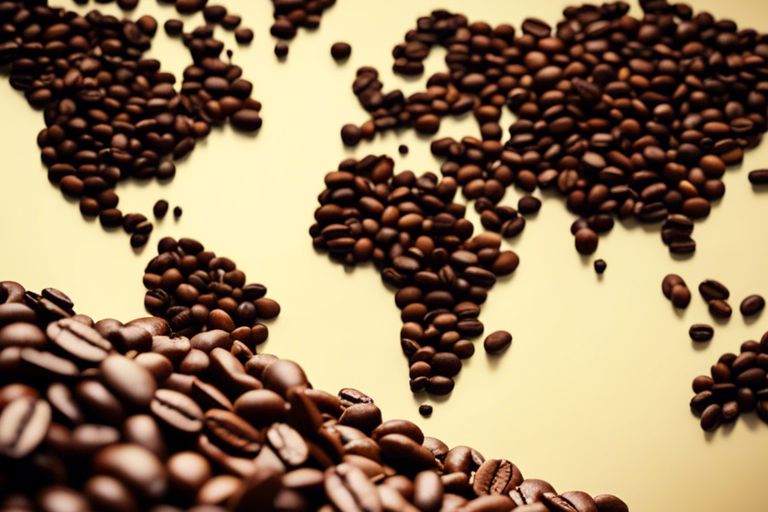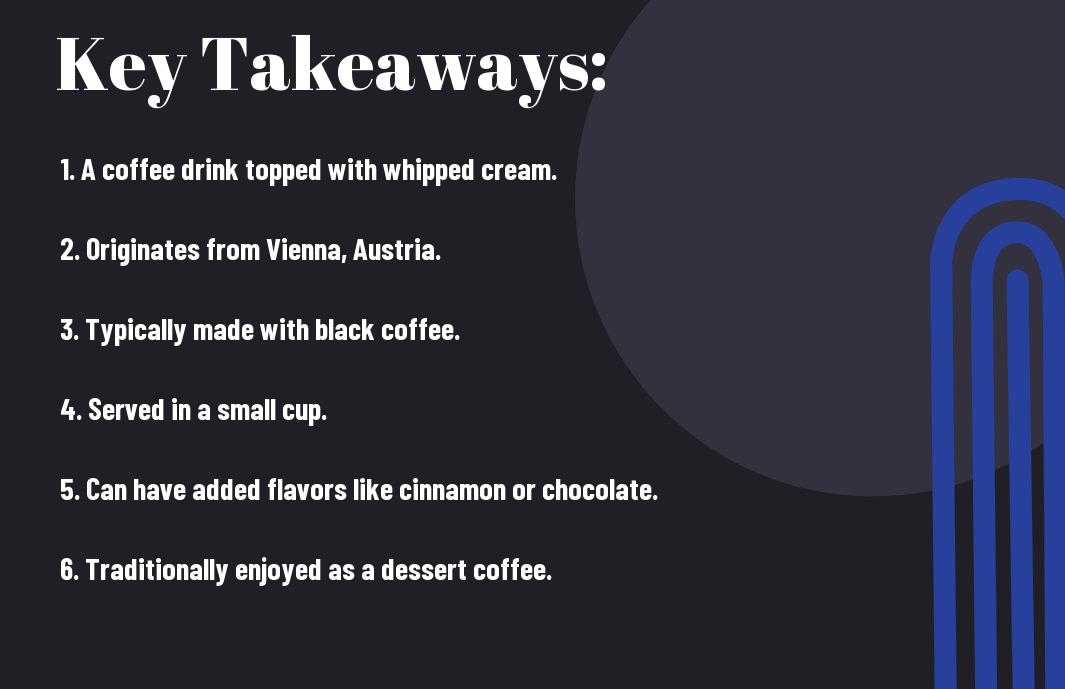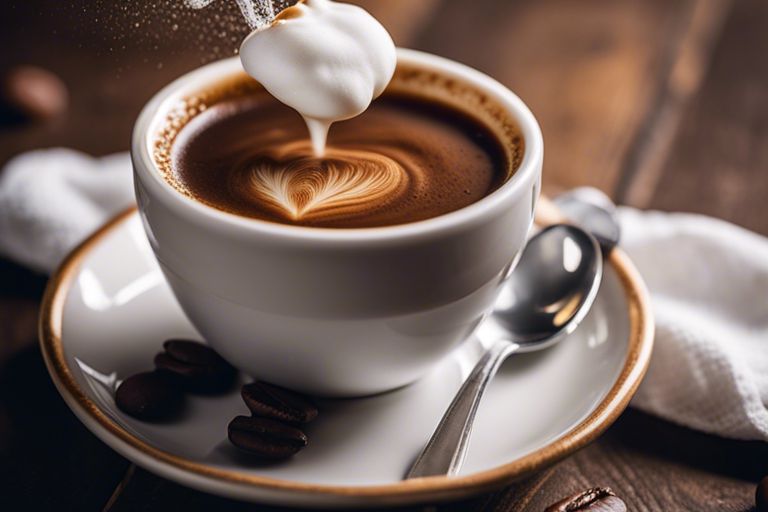Just imagine a world without the glorious aroma and invigorating taste of coffee. This beloved beverage has a rich and fascinating history that dates back centuries. From its origins in Ethiopia to becoming a global phenomenon, the story of coffee is filled with intrigue, adventure, and cultural significance. Grab your favorite brew and let’s journey back in time to uncover the captivating history of this beloved drink.
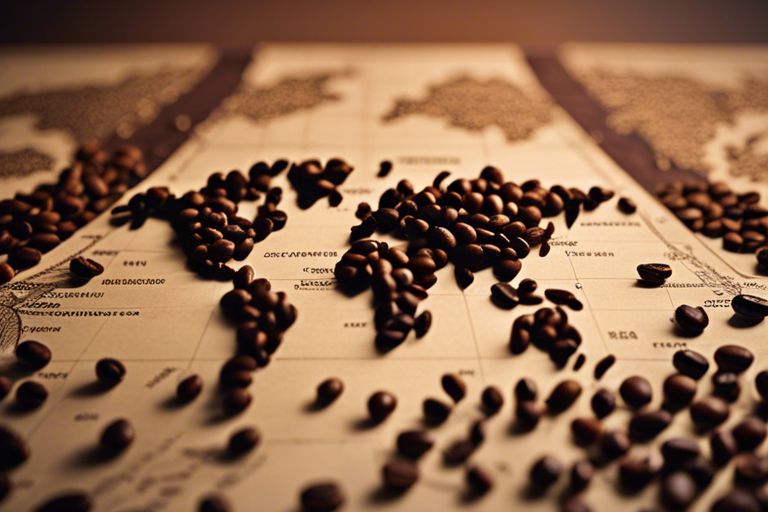
Key Takeaways:
- Origins: Coffee has a long and rich history, dating back to the 9th century in the ancient coffee forests of Ethiopia.
- Spread: From Ethiopia, coffee cultivation spread to the Arabian Peninsula, where it became popular in the Islamic world by the 15th century.
- Europe: Coffee was introduced to Europe in the 17th century through traders and travelers, leading to the opening of the first coffeehouses in the continent.
- Americas: Coffee made its way to the Americas in the 17th century, with significant cultivation taking place in countries like Brazil and Colombia in the centuries that followed.
- Global Phenomenon: Today, coffee is a beloved beverage enjoyed worldwide, with diverse brewing methods, specialty coffee shops, and a rich cultural significance in many societies.
Ancient Origins
A fascinating journey through time unveils the ancient origins of the world’s beloved beverage. To explore deeper into this captivating history, exploring the Brief History of Coffee is a great starting point.
Coffee’s Birthplace: Ethiopia
Any exploration of coffee’s origins must begin in Ethiopia, where the coffee plant, Coffea arabica, is believed to have its roots. Legend has it that a goat herder named Kaldi discovered the stimulating effects of coffee when he noticed his goats becoming energetically playful after consuming the red berries from a certain plant.
Legend of Kaldi and the Dancing Goats
An enchanting tale surrounds the legend of Kaldi and the Dancing Goats, a story that has been passed down through generations. According to the legend, Kaldi was curious about the mysterious berry that transformed his goats into lively performers. Intrigued, he tried the berries himself and experienced a newfound sense of alertness and vitality.
Ancient folklore paints a vivid picture of Kaldi’s discovery, attributing the origins of coffee’s consumption to this serendipitous encounter with the dancing goats. This charming narrative captures the essence of coffee’s magical allure and its journey to becoming a cherished global beverage.
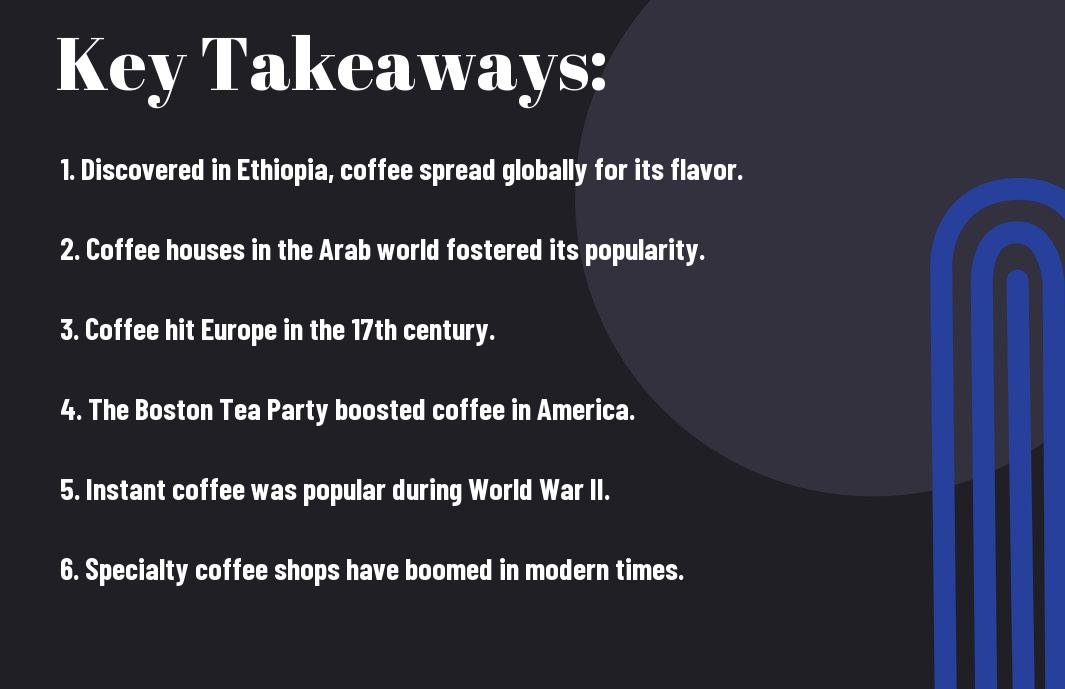
The Spread of Coffee
Even before coffee reached Europe, it made its way to the Arabian Peninsula in the early 15th century. The Yemeni city of Mocha became a significant hub for coffee trade, with beans transported through the Red Sea to Cairo and then to the rest of the Middle East. The popularity of coffee quickly spread through the Arabian trade routes, with coffee houses becoming centers of social activity and intellectual discourse.
Arabian Trade Routes
The Arabian trade routes played a crucial role in the spread of coffee from its origins in Ethiopia to the rest of the world. Coffee cultivation began in Yemen, and it was here that coffee houses emerged as gathering places for socializing and discussing current affairs. The lively atmosphere of these coffee houses soon became an integral part of Arabian culture, fostering the exchange of ideas and shaping the social fabric of the region.
Coffee Houses in the Middle East
To cater to the growing demand for coffee, these establishments quickly spread to other parts of the Middle East, including Cairo, Istanbul, and Damascus. Coffee houses in the Middle East were known as “qahveh khaneh” in Persian and “qahveh khane” in Turkish, emphasizing the significance of coffee as a social beverage. These coffee houses became popular meeting spots for intellectuals, artists, and merchants, playing a vital role in shaping the cultural life of the region.
Middle Eastern coffee houses were not only places to enjoy a cup of coffee but also served as venues for musical performances, storytelling, and even political debates. The vibrant atmosphere of these establishments was integral to the social dynamics of Middle Eastern societies, making them important hubs of cultural exchange and innovation.
European Encounter
Unlike the Arab world, where coffee had already become a significant part of social and cultural life by the 15th century, Europeans only encountered coffee in the 17th century. The introduction of coffee to Europe is attributed to Venetian merchants who brought the first coffee beans to the continent. Initially met with skepticism, coffee soon gained popularity, spreading to other European countries.
Venetian Merchants and the First Imports
Any history of coffee in Europe must mention the role of Venetian merchants in the first imports of coffee beans. The vibrant trade networks of Venice facilitated the transportation of goods from the Middle East, including coffee. As curiosity grew about this exotic beverage, coffee houses began to emerge in major European cities, becoming centers of social interaction and intellectual discourse.
Coffee’s Popularity in England and France
With the establishment of coffee houses in Europe, coffee quickly became a fashionable drink in England and France. In England, coffee houses became known as “penny universities” due to the stimulating conversations that took place over a cup of coffee. Similarly, in France, coffee houses became hubs of cultural exchange and lively debates, playing a significant role in the Enlightenment movement.
First Mentioned in London’s Oxford Dictionary in 1632, coffee was lauded for its stimulating effects, which fueled the intellectual pursuits of the time. The widespread popularity of coffee in England and France paved the way for the development of coffee culture across Europe, shaping the social landscape of the continent.
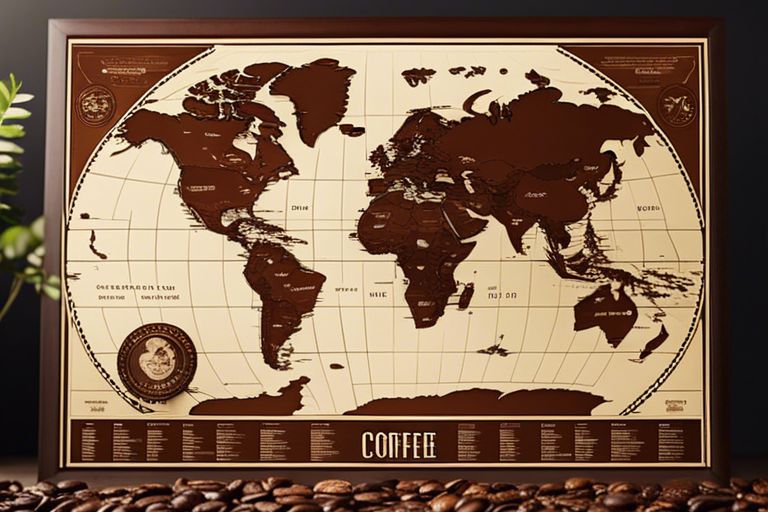
Colonization and Expansion
Coffee Plantations in the Americas
After its introduction to the Caribbean in the early 18th century, coffee quickly spread throughout the Americas thanks to the favorable climate for coffee cultivation. Plantations began to dot the landscapes of countries like Brazil, Colombia, and Jamaica, where the rich volcanic soil and tropical climate proved ideal for growing coffee beans.
The Role of Slavery in Coffee Production
Americas. The expansion of coffee plantations in the Americas was largely fueled by the labor of enslaved people. The demand for coffee was growing rapidly in Europe, and planters turned to slavery to meet this demand. Enslaved Africans were forcibly brought to work on coffee plantations, enduring harsh conditions and back-breaking labor to ensure the success of the coffee industry.
Slavery. The role of slavery in coffee production cannot be overstated. The brutal exploitation of enslaved labor was a dark chapter in the history of coffee, with millions of individuals suffering in the name of profit. The legacy of slavery in the coffee industry continues to be a topic of discussion and calls for greater awareness of the human cost behind every cup of coffee consumed.
Industrialization and Mass Production
The Invention of the Espresso Machine
Any true coffee connoisseur knows the importance of the espresso machine in the history of coffee. In 1822, the first espresso machine was invented in France by Louis Bernard Rabaut. However, it wasn’t until 1901 that Italian inventor Luigi Bezzera created the first modern espresso machine. This invention revolutionized the way coffee was made, allowing for the quick production of strong, concentrated coffee by forcing hot water through finely-ground coffee beans.
The Rise of Commercial Coffee Brands
Machine advancements in the 19th century, such as the invention of the vacuum coffee maker in 1830, paved the way for the rise of commercial coffee brands. Companies like Folgers and Maxwell House capitalized on these innovations, offering pre-ground coffee that could be easily made at home. This marked the beginning of the mass production of coffee and the commercialization of the industry.
Production techniques continued to evolve, with the introduction of instant coffee in the early 20th century by companies like Nescafé. This convenience-driven product further expanded the reach of coffee, making it a staple in households around the world. The rise of commercial coffee brands not only changed the way people consumed coffee but also influenced cultural norms and rituals surrounding the beloved beverage.
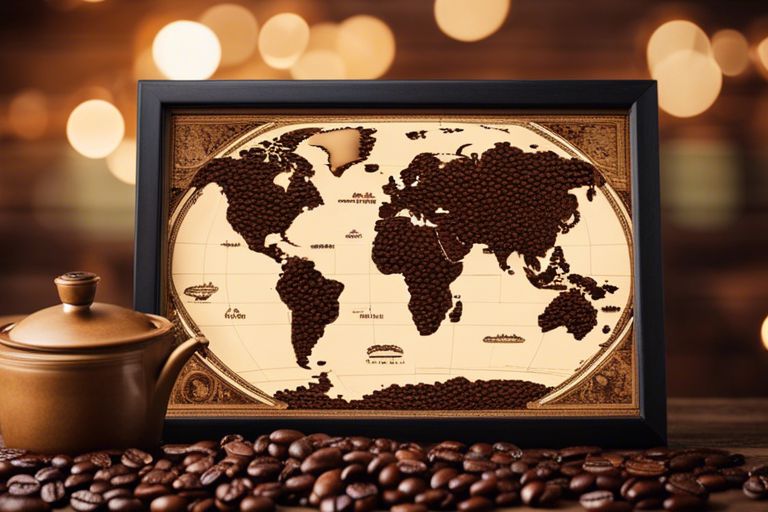
Modern Coffee Culture
The Coffee Revolution of the 1960s
For coffee lovers, the 1960s marked a pivotal moment in coffee culture. This era saw a shift from traditional drip coffee to more sophisticated espresso drinks. Coffeehouses became popular meeting spots for intellectuals, artists, and activists, sparking conversations that would change the world.
Specialty Coffee and the Third Wave
To understand contemporary coffee culture, one must probe into the rise of specialty coffee and the Third Wave movement. In the late 20th century, coffee enthusiasts began focusing on the quality and origin of coffee beans, leading to the development of the specialty coffee market. The Third Wave movement emphasizes the craftsmanship of coffee, treating it as an artisanal product rather than a commodity.
Wave of Change
Specialty Coffee and the Third Wave have transformed coffee consumption worldwide, shaping the way people experience and appreciate their daily brew. By highlighting the nuances of different coffee varietals, brewing methods, and flavor profiles, this movement has elevated coffee to a level of sophistication akin to fine wine or craft beer.
Modern coffee culture is a vibrant tapestry that continues to evolve, with coffee enthusiasts constantly pushing boundaries and exploring new horizons. From experimental brewing techniques to sustainable sourcing practices, the world of coffee today is as diverse and exciting as ever, promising a rich and flavorful future for coffee lovers everywhere.
Summing up
Exploring the history of coffee has taken us on a journey through the ages, from its legendary discovery by goats in Ethiopia to its global popularity today. This beloved beverage has played a significant role in shaping cultures, economies, and even social movements. Understanding the rich history of coffee not only enhances our appreciation for the drink we savor daily but also provides insight into the interconnectedness of our world.
FAQ
Q: When was coffee first discovered?
A: Coffee was first discovered in Ethiopia, according to legend, by a goat herder named Kaldi in the 9th century.
Q: How did coffee become popular around the world?
A: Coffee first became popular in the Arab world, where it was cultivated and traded. It then spread to Europe through trade routes and coffeehouses in the 17th century.
Q: How has coffee culture evolved over the years?
A: Coffee culture has evolved from traditional coffee rituals in Ethiopia and the Middle East to the modern coffeehouse culture seen around the world today, with a variety of brewing methods and specialty coffee drinks.
